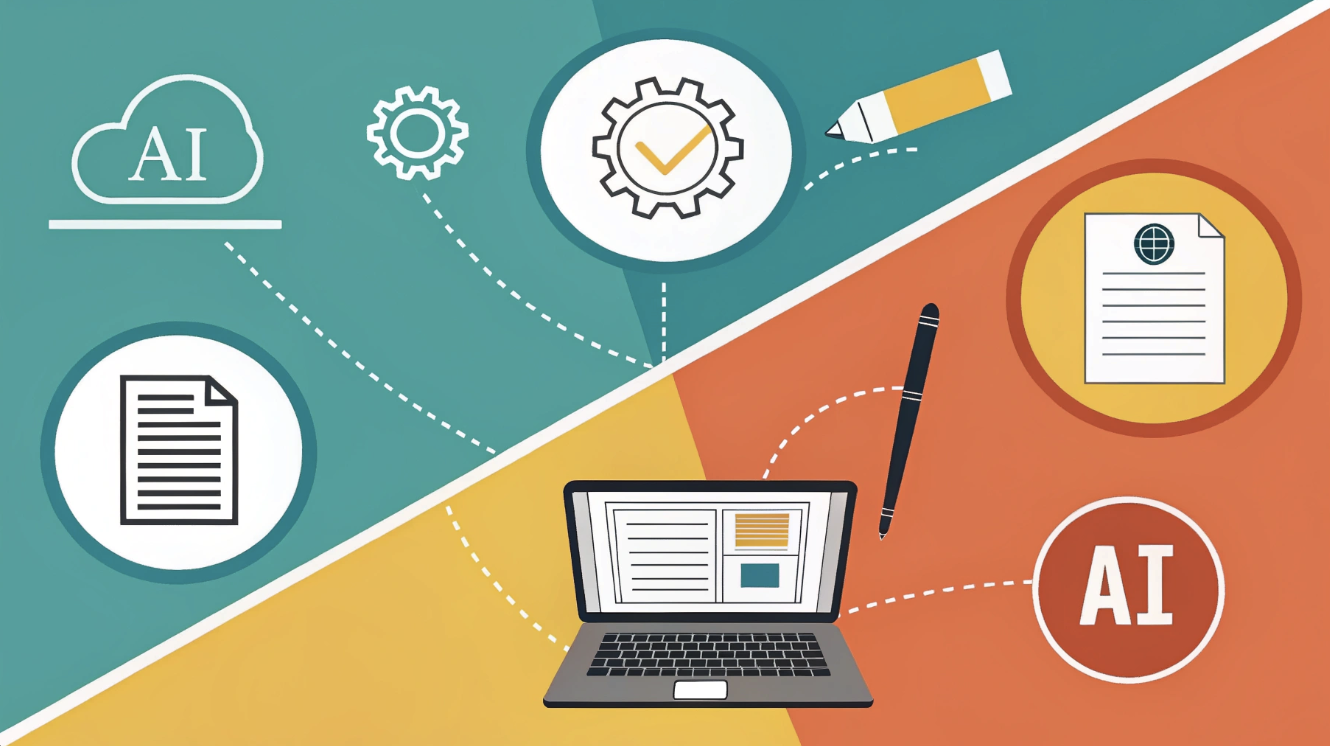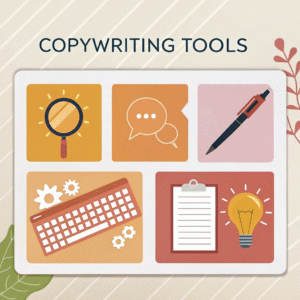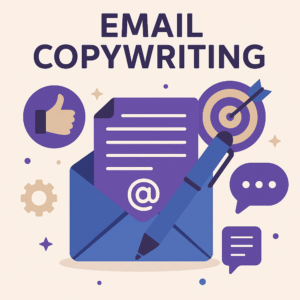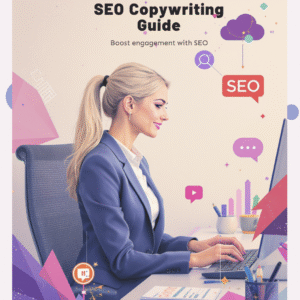
The copywriting industry is rapidly changing and AI is the main culprit. AI is making a big impact by helping you create content faster and more accurately than ever before. As we approach 2025, businesses are adopting this technology to remain competitive. AI tools now produce high-quality writing, reflecting a major shift in marketing strategies.
Did you know 60% of marketers in the UK plan to integrate AI-driven tools into their workflows within the next year? This trend highlights the growing demand for scalable, personalized content that resonates with your audience. To thrive, you must adapt and harness the power of copywriting AI.
Understanding AI Copywriting
What is AI Copywriting?
AI copywriting uses artificial intelligence to create content that engages your audience and drives results. It relies on advanced natural language processing algorithms to generate text tailored to specific goals, such as increasing conversions or building brand awareness.
Unlike traditional copywriting, which depends on human creativity and intuition, AI copywriting automates the process, saving you time and effort.
-
AI copywriting automates content creation, boosting efficiency.
-
Traditional copywriting relies on human experience and originality.
-
Some tasks still require a human touch, ensuring AI complements rather than replaces human writers.
This blend of automation and human creativity allows you to focus on strategy while AI handles repetitive tasks.
How AI Copywriting Tools Work
AI copywriting tools operate using cutting-edge technologies that mimic human writing. These tools analyze vast amounts of data to understand language patterns, user preferences, and emotional tones. Here’s a breakdown of the core technologies powering these tools:
|
Technology/Algorithm |
Description |
|---|---|
|
Enables machines to understand and generate human language, aiding in coherent content creation. |
|
|
Machine Learning (ML) |
Learns from data to improve performance and adapt to user needs over time. |
|
Automated Content Generation |
Creates various content types, such as headlines, blogs, and ad copy, with minimal input. |
|
Sentiment Analysis |
Detects emotional tones in text, helping you craft messages that resonate with your audience. |
|
Data-Driven Insights |
Provides analytics to optimize content and identify trends for better engagement. |
These technologies work together to deliver content that feels human while being backed by data-driven precision.
Examples of AI Copywriting Tools in 2025
The AI copywriting landscape in 2025 is brimming with innovative tools designed to meet diverse needs. Here are some standout examples:
-
Jasper AI: Excels at long-form content creation with features like real-time SEO analysis and advanced context retention.
-
Copy.ai: Offers over 90 templates for marketing content and A/B testing capabilities to refine your messaging.
-
Writesonic: Specializes in news articles with bulk generation and integrated fact-checking for accuracy.
These tools empower you to scale your content strategy effortlessly while maintaining quality and relevance.
Benefits of AI Copywriting
Efficiency and Speed
AI copywriting tools revolutionize the way you approach writing. These tools streamline the process, allowing you to produce high-quality content in a fraction of the time it would take a traditional copywriter. Imagine having the ability to generate a polished blog post, ad copy, or product description in minutes.
This speed empowers you to meet tight deadlines and respond quickly to market trends.
AI tools also reduce the time spent on repetitive tasks. Instead of brainstorming headlines or rewriting drafts, you can focus on strategy and creativity. With features like automated content generation and sentiment analysis, these tools ensure your writing aligns with your goals.
Enhanced productivity is one of the most measurable benefits businesses report after adopting AI copywriting tools.
|
Benefit |
Description |
|---|---|
|
Enhanced Productivity |
AI tools streamline the writing process, allowing marketers to focus on strategy and optimization. |
|
Error Reduction |
AI tools minimize errors in content, ensuring high-quality output consistently. |
|
SEO Optimization |
AI tools suggest keywords and structures to improve search engine rankings. |
|
Consistency in Tone and Style |
AI tools maintain a uniform writing style, ensuring brand consistency across communications. |
With AI, you can achieve more in less time, giving you a competitive edge in today’s fast-paced marketing world.
Scalability for Content Creation
Scaling your content strategy has never been easier. AI copywriting tools enable you to produce large volumes of unique, tailored content without compromising quality.
These tools are always at work, creating content 24/7. If you need thousands of product descriptions or tailored emails for different audiences, AI makes it all happen effortlessly.
AI-generated content ensures consistency across all platforms. It adapts to your brand voice and creates messages that resonate with your audience. For example, AI tools analyze data like browsing histories and social media interactions to craft personalized messages. This level of customization enhances engagement and builds stronger connections with your audience.
You no longer need to worry about overwhelming workloads. AI tools allow you to scale your efforts while maintaining the precision and creativity your audience expects.
Cost-Effectiveness
AI copywriting offers a cost-effective solution for businesses of all sizes. Hiring a team of copywriters can be expensive, especially for large-scale projects. AI tools reduce these costs by automating parts of the copywriting process.
Such optimization allows you to allocate resources more efficiently.
These tools also minimize errors, saving you from costly revisions. They provide data-driven insights, helping you make informed decisions that improve your marketing effectiveness.
AI tools also support multilingual content creation, enabling you to expand into global markets without hiring specialized writers. Investing in AI copywriting tools delivers high-quality results affordably, making them essential for businesses aiming for growth in 2025.
Data-Driven Personalization
AI copywriting tools excel at creating personalized content that resonates with your audience. They analyze vast amounts of data to understand customer preferences, behaviors, and needs. This insight allows you to craft messages that feel tailor-made for each individual.
Personalization builds trust and strengthens your connection with your audience.
Imagine sending an email campaign where every recipient feels like the message was written just for them. AI tools make this possible by using data like purchase history, browsing habits, and even social media activity.
They help you deliver the right message at the right time, increasing engagement and driving conversions.
AI tools also adapt to changing customer preferences. They continuously analyze new data to refine their recommendations. This dynamic approach ensures your content stays relevant and impactful.
Here’s how data-driven personalization can transform your marketing strategy:
|
Feature |
Benefit |
|---|---|
|
Behavioral Analysis |
Understands customer actions to predict future needs. |
|
Dynamic Content Creation |
Generates unique messages for different audience segments. |
|
Real-Time Adaptation |
Adjusts content based on live data for maximum relevance. |
|
Enhanced Customer Insights |
Provides detailed analytics to improve targeting and engagement. |
Embracing data-driven personalization demonstrates audience understanding, enhancing loyalty and differentiating you from competitors. AI empowers you to deliver meaningful experiences that leave a lasting impression.
Addressing Concerns About AI Copywriting
Creativity vs. AI: Can AI Match Human Ingenuity?
You might wonder if AI can truly replicate the creativity of a professional copywriter. While AI excels at generating ideas quickly, it often struggles with originality. AI copywriting tools rely on existing data, which means they can unintentionally recycle ideas.
This limitation makes it difficult for AI to craft unique brand voices or emotionally compelling stories that resonate deeply with your target audience.
However, studies show that AI can sometimes surprise us. In a creativity test called the Alternate Uses Task (AUT), AI chatbots outperformed humans in generating creative responses.
Yet, the best human ideas still matched or surpassed the most innovative AI-generated content. This highlights a key point: AI can assist with creative tasks, but it cannot fully replace the human touch. Your ability to understand cultural nuances, convey genuine emotion, and connect with your audience on a personal level remains unmatched.
|
Aspect |
Findings |
|---|---|
|
Participants |
|
|
Task |
Alternate Uses Task (AUT), a common divergent thinking task |
|
AI Performance |
On average, AI chatbots produced more creative responses than humans |
|
Best Human Ideas |
The best ideas from humans matched or surpassed those generated by chatbots |
|
Conclusion |
Highlights the unique nature of human creativity that AI may struggle to replicate fully |
Ensuring Quality and Originality
Maintaining quality and originality in AI-generated content requires proactive measures. You need to define clear goals for your content to ensure it aligns with your brand’s strategy.
Providing detailed instructions to AI tools helps prevent biased or irrelevant output. Regularly monitoring and evaluating the content ensures it meets your standards.
To maintain credibility, verify facts and references. Tools like Grammarly and Copyscape can help identify errors and plagiarism, while platforms like Clearscope analyze SEO performance.
These steps ensure your marketing copy remains accurate, engaging, and aligned with your brand’s voice.
-
Define a purpose for the content to align with organizational goals.
-
Input clear instructions with guardrails to prevent biased content.
-
Use tools like Grammarly, Hemingway App, and Clearscope for quality checks.
By combining AI’s efficiency with your oversight, you can produce content that stands out while staying true to your brand.
Ethical Considerations in AI Copywriting
Ethical concerns often arise when using AI in copywriting. AI can unintentionally amplify biases in its training data, leading to stereotyping or misrepresentation. It may also produce inaccurate information, risking the spread of misinformation.
To address these issues, you must establish clear guidelines. Input diverse data to reduce bias and ensure content aligns with ethical standards. Regularly monitor AI output for accuracy and involve subject matter experts to fact-check sensitive topics.
Transparency is also crucial. Let your audience know when AI contributes to your content. This builds trust and ensures your marketing aligns with your values.
-
Define a purpose for the content to align with ethical goals.
-
Use diverse data input methods to reduce bias.
-
Monitor and evaluate output regularly for accuracy.
-
Fact-check with subject matter experts to ensure reliability.
-
Be transparent about AI involvement in content creation.
Addressing these concerns allows you to use AI responsibly while maintaining your audience’s trust. While AI copywriting is a powerful tool, it’s your ethical oversight that ensures it positively impacts your marketing strategy.
Strategies to Leverage AI Copywriting Tools
Selecting the Right AI Copywriting Tools
Choosing the right AI copywriting tools can transform your content creation process. To make the best choice, start by understanding your specific needs. Do you need tools for blog posts, ad copy, or email campaigns?
Identifying your goals helps you narrow down your options.
Next, evaluate the features of each tool. Look for language support, speed, and the ability to create unique content.
Tools that integrate with your existing platforms can save you time and effort.
Consider these steps when selecting a tool:
-
Define your content needs.
-
Compare features like scalability and accuracy.
-
Test multiple tools to find the best fit.
-
Review user feedback to gauge reliability.
-
Ensure the tool aligns with your budget and future goals.
A well-chosen tool will not only meet your current requirements but also grow with your business. This ensures you stay ahead in the competitive world of copywriting.
Integrating AI into Your Workflow
Integrating AI into your workflow requires a thoughtful approach. Begin by understanding the capabilities of your chosen tool. This allows you to leverage its full potential.
Use AI to automate repetitive tasks like generating headlines or analyzing data. This frees up your time for strategic and creative work.
Balance is key. While AI excels at efficiency, your creativity adds the human touch that resonates with your audience. For example, you can use AI to draft content and then refine it to match your brand voice.
This collaboration ensures high-quality results.
To integrate AI effectively:
-
Automate mundane tasks to save time.
-
Use AI insights to guide your strategy.
-
Combine AI-generated content with your expertise.
This approach enhances productivity while maintaining the authenticity of your copywriting.
AI copywriting has become a cornerstone for businesses striving to excel in 2025. It empowers you to create content with unmatched efficiency, scalability, and personalization. The latest tools have evolved into sophisticated systems that rival human writers, offering features like real-time SEO optimization and multi-language content generation.
These advancements streamline your workflow and help you connect with your audience on a deeper level.
You don’t have to choose between human creativity and AI innovation. Instead, use AI to draft content, refine it with your expertise, and polish it for quality. This collaboration ensures your copywriting remains authentic and impactful. Through embracing this balance, you can deliver content that resonates with your audience while staying ahead of the competition.
The future of copywriting lies in this partnership. With AI as your ally, you can unlock new possibilities and elevate your brand’s voice.
FAQ
What types of content can AI copywriting tools create?
AI tools can generate various content types, including blog posts, ad copy, product descriptions, email campaigns, and social media posts. They adapt to your needs, ensuring consistency and quality across platforms. This versatility makes them invaluable for modern marketing strategies.
Will AI replace human copywriters?
AI enhances your workflow but doesn’t replace human creativity. It handles repetitive tasks, freeing you to focus on strategy and storytelling. The best results come from combining AI’s efficiency with your unique insights and emotional intelligence.
How do I ensure AI-generated content aligns with my brand voice?
Provide clear instructions and examples of your brand’s tone and style. Many AI tools allow you to customize settings for consistency. Regularly review and refine the output to ensure it matches your expectations and resonates with your audience.
Are AI copywriting tools difficult to use?
Most AI tools are user-friendly and designed for marketers of all skill levels. They often include templates, tutorials, and support to guide you. With minimal training, you can start creating high-quality content quickly and efficiently.
How can I measure the success of AI-generated content?
Track metrics like engagement rates, click-through rates, and conversions. Use analytics tools to assess performance and identify areas for improvement. AI tools often provide built-in insights, helping you optimize your content strategy for better results.


